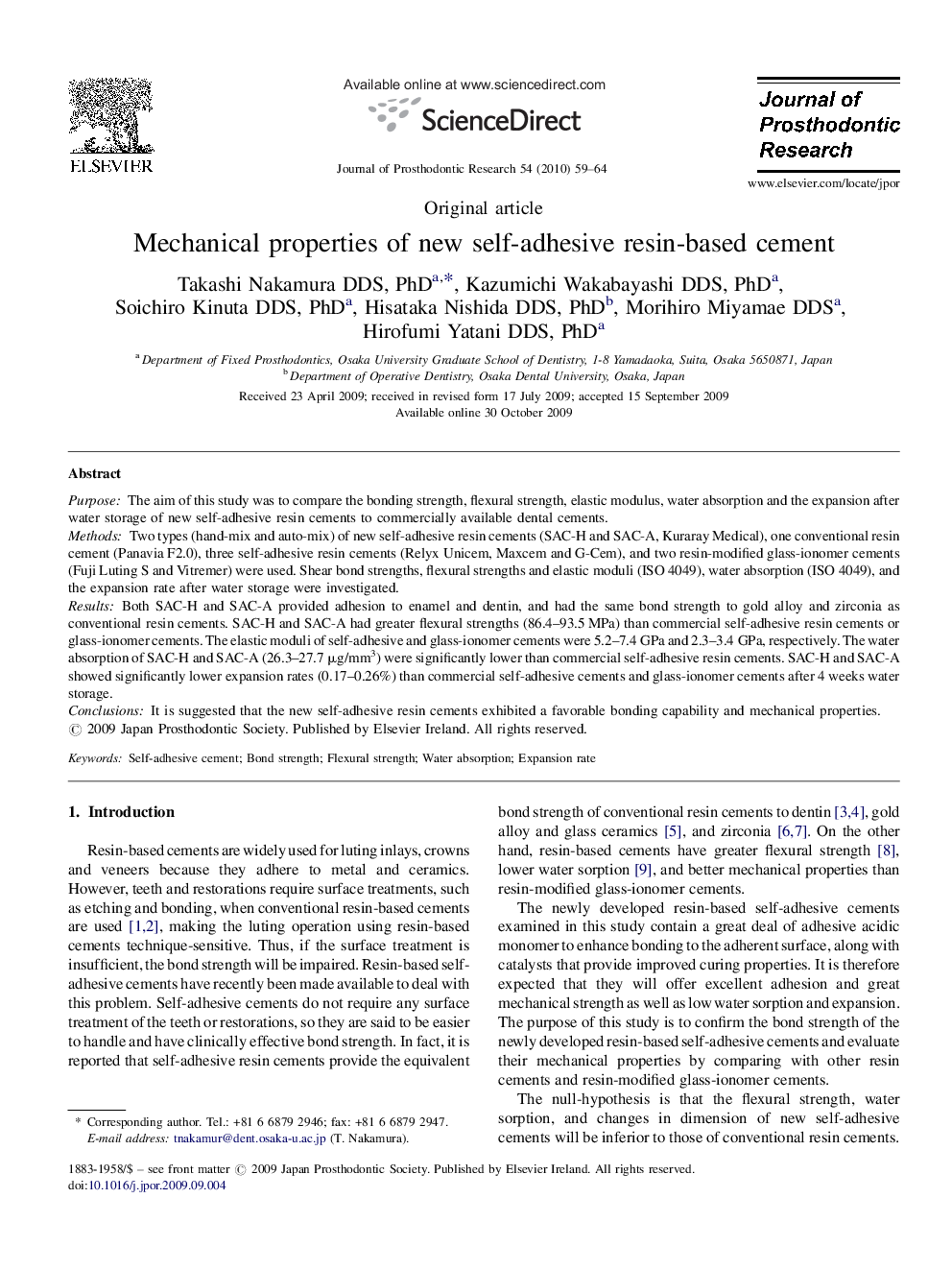| Article ID | Journal | Published Year | Pages | File Type |
|---|---|---|---|---|
| 3160697 | Journal of Prosthodontic Research | 2010 | 6 Pages |
PurposeThe aim of this study was to compare the bonding strength, flexural strength, elastic modulus, water absorption and the expansion after water storage of new self-adhesive resin cements to commercially available dental cements.MethodsTwo types (hand-mix and auto-mix) of new self-adhesive resin cements (SAC-H and SAC-A, Kuraray Medical), one conventional resin cement (Panavia F2.0), three self-adhesive resin cements (Relyx Unicem, Maxcem and G-Cem), and two resin-modified glass-ionomer cements (Fuji Luting S and Vitremer) were used. Shear bond strengths, flexural strengths and elastic moduli (ISO 4049), water absorption (ISO 4049), and the expansion rate after water storage were investigated.ResultsBoth SAC-H and SAC-A provided adhesion to enamel and dentin, and had the same bond strength to gold alloy and zirconia as conventional resin cements. SAC-H and SAC-A had greater flexural strengths (86.4–93.5 MPa) than commercial self-adhesive resin cements or glass-ionomer cements. The elastic moduli of self-adhesive and glass-ionomer cements were 5.2–7.4 GPa and 2.3–3.4 GPa, respectively. The water absorption of SAC-H and SAC-A (26.3–27.7 μg/mm3) were significantly lower than commercial self-adhesive resin cements. SAC-H and SAC-A showed significantly lower expansion rates (0.17–0.26%) than commercial self-adhesive cements and glass-ionomer cements after 4 weeks water storage.ConclusionsIt is suggested that the new self-adhesive resin cements exhibited a favorable bonding capability and mechanical properties.
